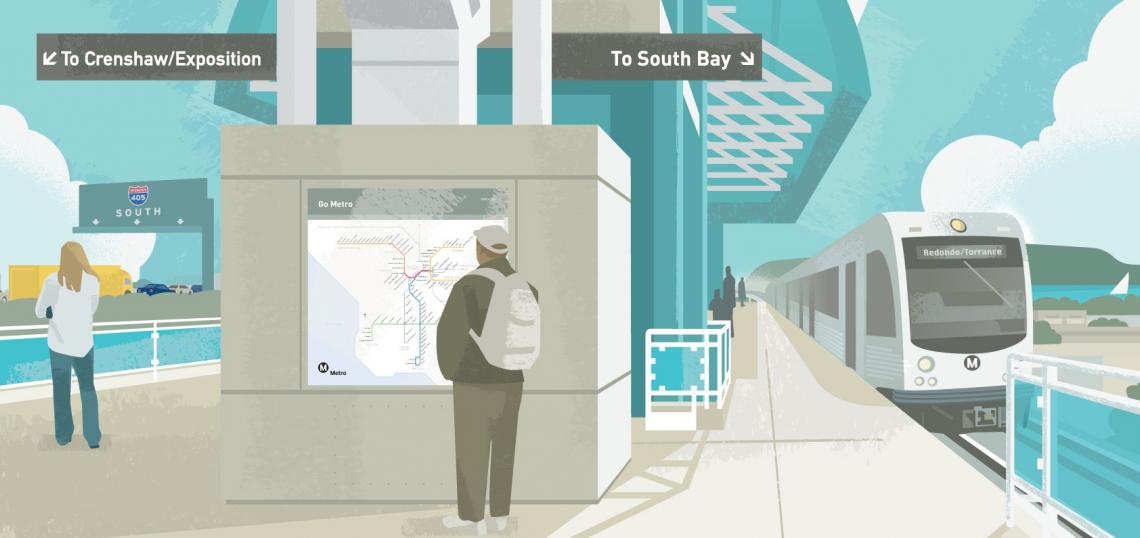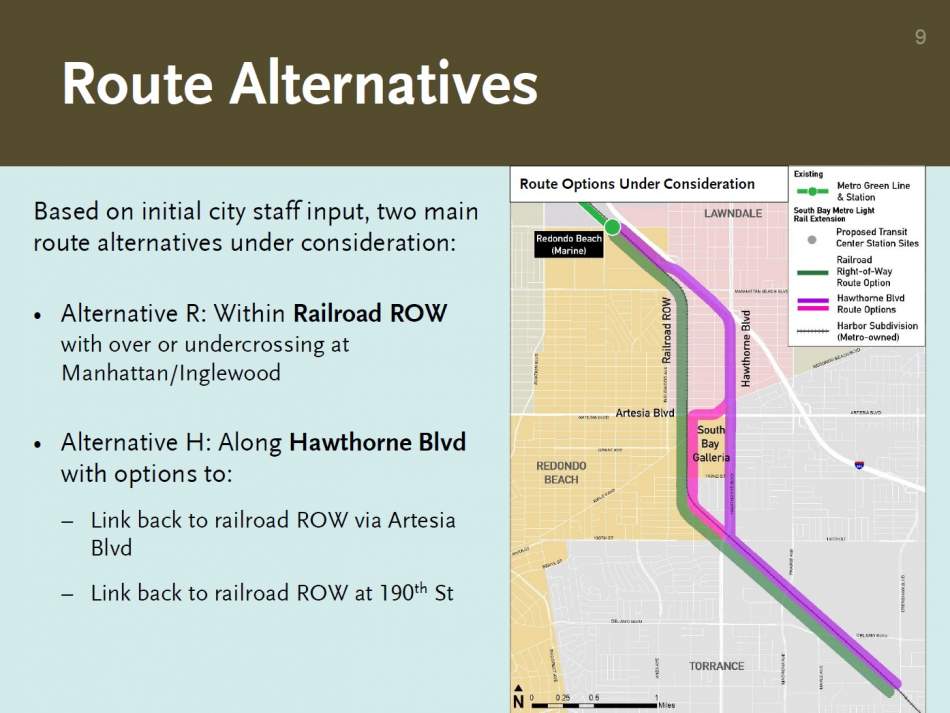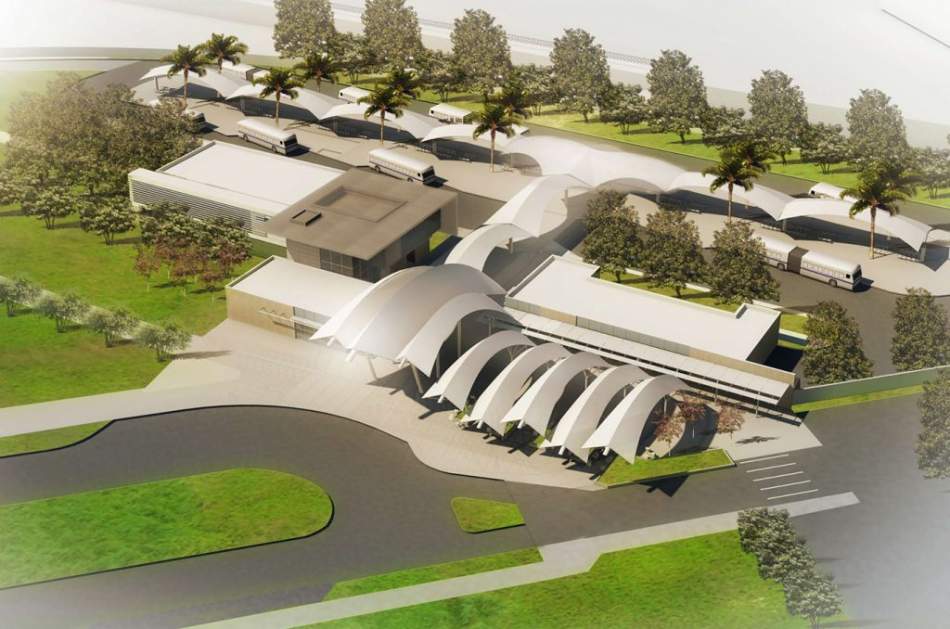Bolstered by $619 million from the Measure M sales tax, Metro is forging ahead with plans to extend service on the Green and Crenshaw/LAX Lines 4.6 miles southward to a new transit center in Torrance. The transit agency has unveiled new options for the project in a presentation to the South Bay Service Council.
The light rail extension would primarily traverse the Harbor Subdivision - a historic freight rail right-of-way which runs along a meandering route between the Downtown and the Port of Los Angeles. Metro is also considering a second alternative, which would see trains routed down Hawthorne Boulevard between the 405 Freeway and 190th Street in Redondo Beach, before returning to the Harbor Subdivision.
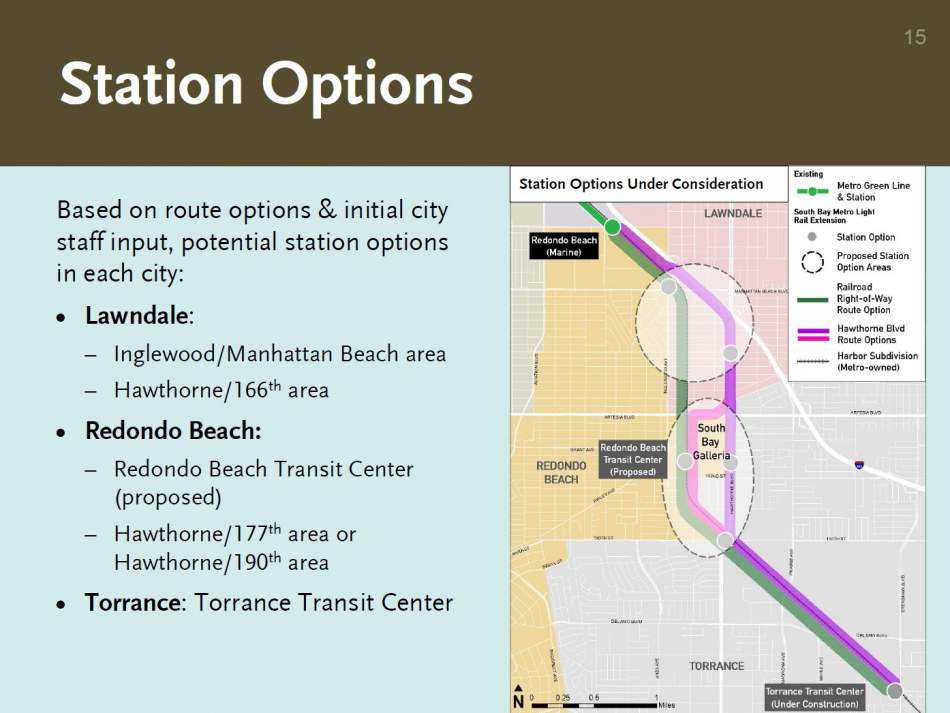
Along the Harbor Subdivision alignment, stations are being considered at 1) the intersection of Manhattan Beach Boulevard and Inglewood Boulevard, 2) the west side of the South Bay Galleria, 3) the proposed Redondo Beach Transit Center at Hawthorne Boulevard and 190th Street and 4) the Torrance Transit Center at Crenshaw Boulevard.
The proposed Hawthorne Boulevard alignment, running along a busy commercial corridor, would instead locate stations at 1) Hawthorne and 166th Street, 2) the east side of the South Bay Galleria, 3) the proposed Redondo Beach Transit Center and 4) the Torrance Transit Center.
Both alternatives would allow service to proceed north to a new station being built connect with the LAX Automated People Mover.
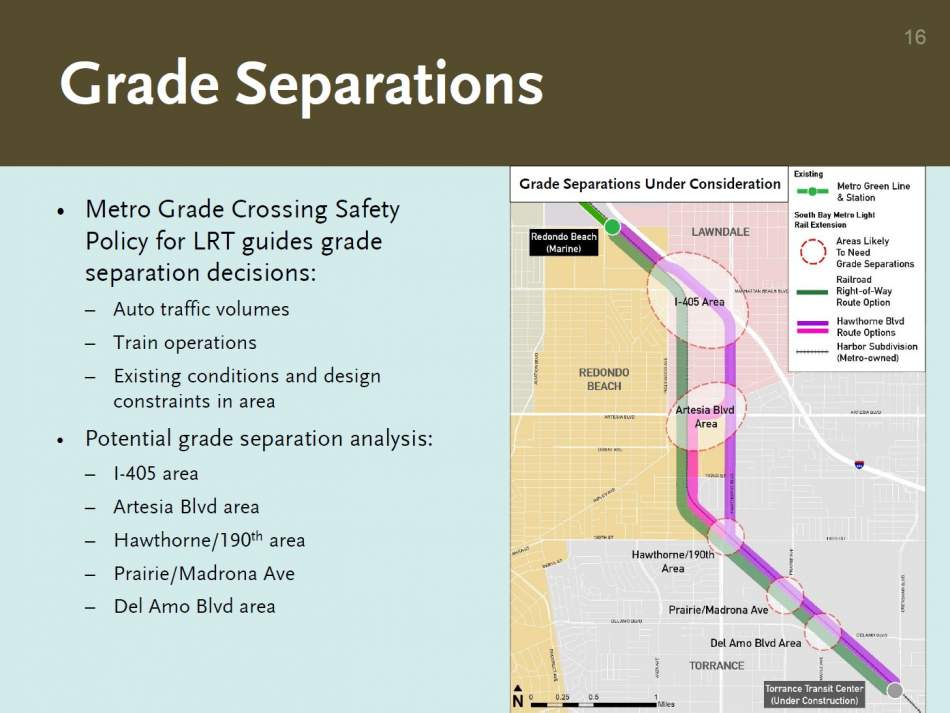
Grade separations are being considered for both alternatives near the 405 Freeway, at Artesia Boulevard, at Hawthorne Boulevard, at Prairie Avenue, and at Maple Avenue. Otherwise, trains would proceed at-grade. However, a substantial portion of the Harbor Subdivision is already grade-separated.
Metro is currently conducting a supplemental alternatives analysis for the project, building off of an environmental study put on hold in 2010. Metro Board approval is expected in Winter 2018.
Per the Measure M expenditure plan, construction of the South Bay extension is expected to occur over four years between 2026 and 2030. Total project costs are estimated at $891 million, funded by Measure M and Measure R tax revenue.




